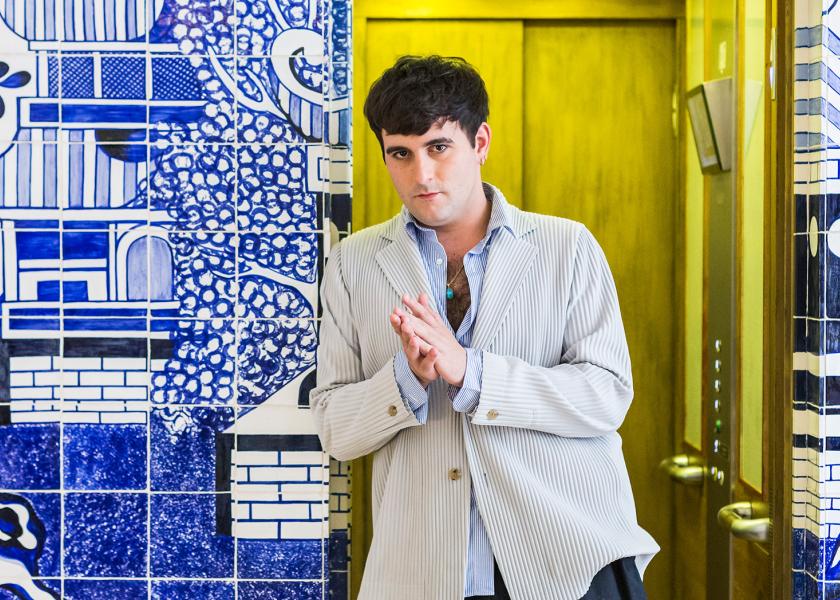‘Voguing’
The Protest Dance (Madonna Didn’t Invent)

From drag balls in 1920s New York to Parisian ballrooms in 2019, voguing has never lost its lustre. Now landing in Spain, it is here to stay. Come on, vogue!
It’s the roaring twenties in Harlem, New York. A group of mostly white transgender and drag people start organizing beauty pageants to compete among them. Their goal is to rise to fame within the LGBTIQ+ community of that period. The pageants evolved in the 1960s and especially in the 1980s to become a scene made up of (mostly) black and Latin gay and transgender people. A novelty was introduced—posing and parading as competition categories were joined by dance battles with choreographies that took their inspiration from fashion magazine poses.
In the decade of leg warmers and Madonna’s reign (she popularized the dance in the music video for “Vogue”), the famous French fashion magazine inspired the name of what would become a dance infused with political claims. Voguing was never just a mere form of artistic expression: “I would say it’s broadly a way of life within a wider culture—the ballroom scene,” says Silve ManneQueen aka Mother Spain, dancer, choreographer and voguing pioneer in Spain.
As seen in Netflix TV series Pose, ballrooms in New York in the 1960s and 1980s became a safe place where sexual diversity wasn’t a handicap and everyone could feel and express themselves freely, unafraid of being judged or repudiated. Manuel Segade, director of the Ca2m Art Center in Móstoles (Madrid) and curator of the 2018 exhibition Elements of Vogue, says they were places where “through dance and other forms of kinship beyond the consanguineous family some communities created ways of life for their collective survival.”
“The ballroom scene allows people to express themselves freely, giving them the chance to experience for a day (the ball day) the fantasy of dressing up and living it in full glory, something that is not possible to replicate in real life for different reasons. It also works as a tool to improve self-esteem, personal growth and self-confidence, which is later reflected in your day-to-day life,” Silvi ManneQueen points out.
"Voguing has always been reinvented"
Manhattan drag queen Crystal LaBeija was responsible for one of the most important moments in the history and evolution of the ballroom scene, and therefore in the genesis of voguing. During a beauty pageant held in 1967, LaBeija showed her disagreement with the first prize being given to a white drag, arguing that black and Latin drags were recurrently denied the first place. “This triggered the creation of the first house (House of LaBeija)," says Silvi ManneQueen.
Segade says the houses became a real home for boys and girls who had never had one or who had been kicked out because of their sexuality. At the same time, these houses developed into rival teams that would compete in balls, also known as battles. Voguing, the most danceable side of battles, evolved by adopting new styles, while competitions became more and more intense and popular.
The first style, known today as Old Way Vogue, is a sequence of stylish poses, with linear and angular movements inspired by martial arts and military parades. The second, New Way, kept the lines and the angles, but movements were speedier and included visual effects and contortionism. And the third one, called Vogue Femme, was inspired by women. “It’s the most eye-catching of the three. It embodies femininity with circular and fluid movements of the hands and the arms, hip swinging and tiptoeing simulating heels. It is softer, though it can also be danced more dramatically and sharply with acrobatic movements,” ManneQueen explains.
"Voguing has always been reinvented," says Manuel Segade. “I remember the dip (a very characteristic Vogue Femme movement that consists in falling backwards) was born as an aesthetic reference to the collapsing and massive deaths of queer bodies during the AIDS crisis. That movement is still being danced today.”
Vogue Femme is the most visible style in Europe, Paris leading the way. “It was brought here in 2010 by Lasseindra Ninja, a Frenchwoman who had immigrated to the United States, where she got immersed in all this. But there were others, like Stéphane Mizrahi, who were voguing long before her,” explains photographer Teresa Suárez Zapater, one of the photojournalists on the Paris ballroom scene.
Today there are competitions in Zaragoza, Alicante, Barcelona, Málaga, and Valencia
In Spain the movement penetrated slowly but gradually to spread rather fast in recent years. In 2009, Silvi ManneQueen –the mother of Kiki House of F.A.B— started organizing voguing workshops with international guests. In 2014, she coordinated the first ball in Spain. She established a main annual ball, as well as other smaller balls throughout the year, paving the way for the Madrid Ballroom Scene. "The aim was to diffuse and advertise this culture so people can benefit from all the positive and personal aspects this environment offers," she says.
Some of the participants in the first balls came from other cities and spread the interest for voguing. Today there are competitions in Zaragoza, Alicante, Barcelona, Málaga, and Valencia, to name a few. Which indicates that voguing (with its poses, floor performances, linear and angular movements, dips and parades) and the ballroom scene have come to Spain to stay and grow with glory and splendour.
The key to its success seems clear: beyond its spectacular nature (costumes, parades, movements...), voguing is, above all, a dance of resistance and symbol of the LGTBIQ + community.



